|
[1]
|
[ W.C. Allee, Integration of problems concerning protozoan populations with those of general biology, American Naturalist, 75 (1941): 473-487.
|
|
[2]
|
[ U. Amaldi, Particle accelerators take up the fight against cancer,
CERN Courier, URL http://cerncourier.com/cws/article/cern/29777.
|
|
[3]
|
[ L. Barbara,G. Benzi,S. Gaini,F. Fusconi,G. Zironi,S. Siringo,A. Rigamonti,C. Barabara,W. Grigioni,A. Mazziotti,L. Bolondi, Natural history of small untreated hepatocellular carcinoma in cirrhosis: A multivariate analysis of prognostic factors of tumor growth rate and patient survival, Hepatology, 16 (1992): 132-137.
|
|
[4]
|
[ S.M. Blower,E.N. Bodine,K. Grovit-Ferbas, Predicting the potential public health impact of disease-modifying HIV vaccines in South Africa: The problem of subtypes, Current Drug Targest -Infectious Disorders, 5 (2005): 179-192.
|
|
[5]
|
[ S. Blower,H. Dowlatabadi, Sensitivity and uncertainty analysis of complex models of disease transmission: {An HIV} model, as an example, International Statistical Review, 62 (1994): 229-243.
|
|
[6]
|
[ E.N. Bodine,M.V. Martinez, Optimal genetic augmentation strategies for a threatened species using a continent-island model, Letters in Biomathematics, 1 (2014): 23-39.
|
|
[7]
|
[ T. Bortfeld, An analytical approximate of the bragg curve for therapeutic proton beams, Medical Physics, 24 (1997): 2024-2033.
|
|
[8]
|
[ T. Bortfeld,W. Schlegel, An analytic approximation of depth-dose distributions for therapeutic proton beams, Physics in Medicine & Biology, 41 (1996): 1331-1339.
|
|
[9]
|
[ D. Boukal,L. Berec, Single-species models of the allee effect: Extinction boundaries, sex ratios, and mate encounters, Journal of Theoretical Biology, 218 (2002): 375-394.
|
|
[10]
|
[ W.H. Bragg,R. Kleenman, On the ionization curve of radium, Philosophical Magazine, S6 (1904): 726-738.
|
|
[11]
|
[ T. Chiba,K. Tokuuye,Y. Matsuzaki,S. Sugahara,Y. Chuganji,K. Kagei,J. Shoda,M. Hata,M. Abei,H. Igaki,N. Tanaka,Y. Akine, Proton beam therapy for hepatocellular carcinoma: A retrospective review of 162 patients, Clinical Cancer Research, 11 (2005): 3799-3805.
|
|
[12]
|
[ F. Courchamp, L. Berec and J. Gascoigne,
Allee Effects in Ecology and Conservation, Oxford Biology, Oxford University Press, 2009.
|
|
[13]
|
[ F. Dionisi,L. Widesott,S. Lorentini,M. Amichetti, Is there a role for proton therapy in the treatment of hepatocellular carcinoma? A systematic review, Radiotherapy & Oncology, 111 (2014): 1-10.
|
|
[14]
|
[ N. Fausto, Liver regeneration, Journal of Hepatology, 32 (2000): 19-31.
|
|
[15]
|
[ A. Grajdeanu,
Modeling Diffusion in a Discrete Environment, Technical Report GMU-CS-TR-2007-1, Department of Computer Science, George Mason University, Fairfax, VA, 2007.
|
|
[16]
|
[ I. Hara,M. Murakami,K. Kagawa,K. Sugimura,S. Kamidono,Y. Hishikawa,M. Abe, Experience with conformal proton therapy for early prostate cancer, American Journal of Clinical Oncology, 27 (2004): 323-327.
|
|
[17]
|
[ D. Jette,W. Chen, Creating a spread-out bragg peak in proton beams, Physics in Medicine & Biology, 56 (2011): N131-N138.
|
|
[18]
|
[ R. Kjellberg,T. Hanamura,K. Davis,S. Lyons,R. Adams, Bragg-peak proton-beam therapy for arteriovenous malformations of the brain, New England Journal of Medicine, 309 (1983): 269-274.
|
|
[19]
|
[ K.B. Lee,J.-S. Lee,J.-W. Park,T.-L. Huh,Y. Lee, Low energy proton beam induces tumor cell apoptosis through reactive oxygen species and activation of caspases, Experimental & Molecular Medicine, 40 (2008): 118-129.
|
|
[20]
|
[ R. Levy,R. Schulte, Stereotactic radiosurgery with charged-particle beams: Technique and clinical experience, Translational Cancer Research, 1 (2012): 159-172.
|
|
[21]
|
[ E. Lindblom,
The Impact of Hypoxia on Tumour Control Probability in the High-Dose Range Used in Stereotactic Body Radiation Therapy, PhD thesis, Stockholm University, 2012.
|
|
[22]
|
[ S. MacDonald,T. DeLaney,J. Loeffler, Proton beam radiation therapy, Cancer Investigation, 24 (2006): 199-208.
|
|
[23]
|
[ O. Manley, A mathematical model of cancer networks with radiation therapy, Journal of Young Investigators, 27 (2014): 17-26.
|
|
[24]
|
[ G.K. Michalopoulos,M.C. DeFrances, Liver regeneration, Science, 276 (1997): 60-66.
|
|
[25]
|
[ N. Nagasue,H. Yukaya,Y. Ogawa,H. Kohno,T. Nakamura, Human liver regeneration after major hepatic resection; A Study of Normal Liver and Livers with Chronic Hepatitis and Cirrhosis, Annals of Surgery, 206 (1987): 30-39.
|
|
[26]
|
[ N. Okazaki,M. Yoshino,T. Yoshida,M. Suzuki,N. Moriyama,K. Takayasu,M. Makuuchi,S. Yamazaki,H. Hasegawa,M. Noguchi,S. Hirohashi, Evalulation of the prognosis for small hepatocellular carcinoma bbase on tumor volume doubling times, Cancer, 63 (1989): 2207-2210.
|
|
[27]
|
[ H. Paganetti and T. Bortfeld, New Technologies in Radiation Oncology, Medical Radiology Series, Springer-Verlag, chapter Proton Beam Radiotherapy -The State of the Art, (2006), 345-363.
|
|
[28]
|
[ R.E. Schwarz,G.K. Abou-Alfa,J.F. Geschwind,S. Krishnan,R. Salem,A.P. Venook, Nonoperative therapies for combined modality treatment of hepatocellular cancer: expert consensus statement, HPB, 12 (2010): 313-320.
|
|
[29]
|
[ R. Siegel,K. Miller,A. Jemal, Cancer statistics, 2015, CA: A Cancer Journal for Clinicians, 65 (2015): 5-29.
|
|
[30]
|
[ J.D. Slater,C.J.J. Rossi,L.T. Yonemoto,D.A. Bush,B.R. Jabola,R.P. Levy,R.I. Grove,W. Preston,J.M. Slater, Proton therapy for prostate cancer: the initial loma linda university experience, International Journal of Radiation Oncololy Biology Physics, 59 (2004): 348-352.
|
|
[31]
|
[ A. Terahara,A. Niemierko,M. Goitein,D. Finkelstein,E. Hug,N. Liebsch,D. O'Farrell,S. Lyons,J. Munzenrider, Analysis of the relationship betwen tumor dose inhomogeneity and local control in patients with skull base chordoma, International Journal of Radiation Oncololy Biology Physics, 45 (1999): 351-358.
|
|
[32]
|
[ M. Tubiana, Tumor cell proliferation kinetics and tumor growth rate, Acta Oncologica, 28 (1989): 113-121.
|
|
[33]
|
[ W. Ulmer,B. Schaffner, Foundation of an analytical proton beamlet model for inclusion in a general proton dose calculation system, Radiation Physics and Chemistry, 80 (2011): 378-389.
|
|
[34]
|
[ D. Weber,A. Trofimov,T. DeLaney,T. Bortfeld, A treatment plan comparison of intensity modulated photon and proton therapy for paraspinal sarcomas, International Journal of Radiation Oncololy Biology Physics, 58 (2004): 1596-1606.
|
|
[35]
|
[ U. Weber,G. Kraft, Comparison of carbon ions vs protons, The Cancer Journal, 15 (2009): 325-332.
|
|
[36]
|
[ E. Werner, A general theoretical and computational framework for understanding cancer, arXiv: 1110.5865.
|
|
[37]
|
[ R. Wilson, Radiological use of fast protons, Radiology, 47 (1946): 487-491.
|
|
[38]
|
[ J.F. Ziegler, The stopping of energetic light ions in elemental matter, Journal of Applied Physics, 85 (1999): 1249-1272.
|










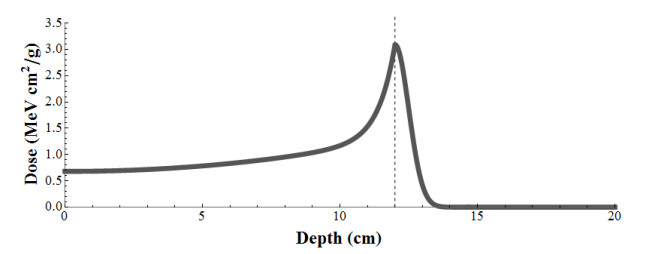
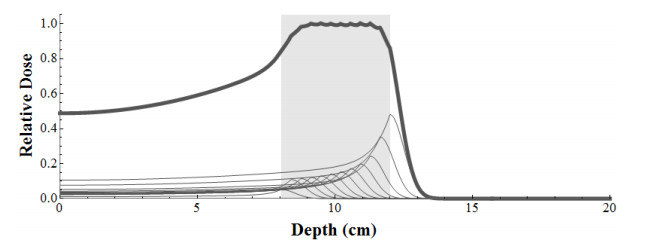
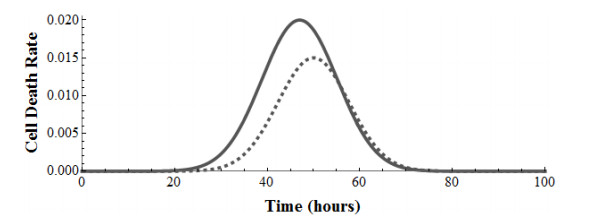
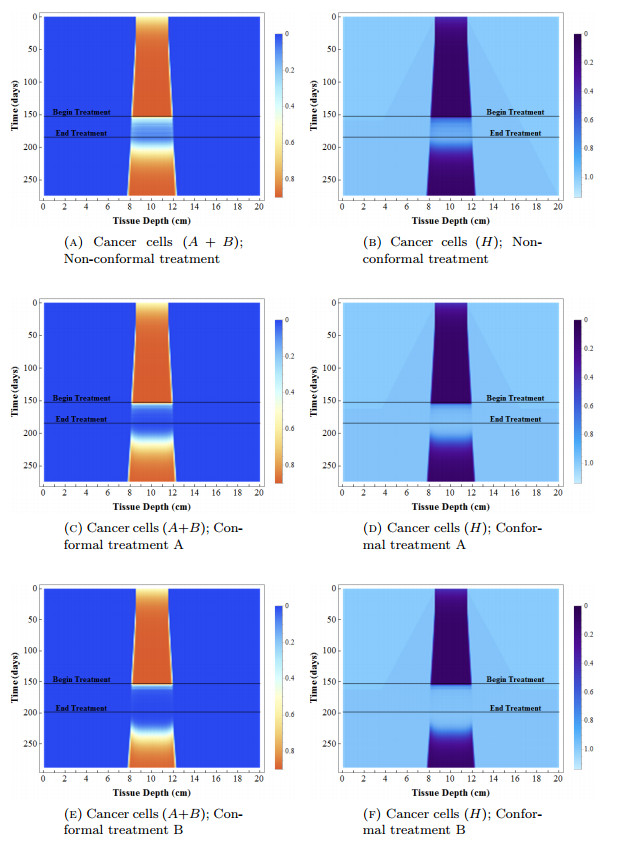
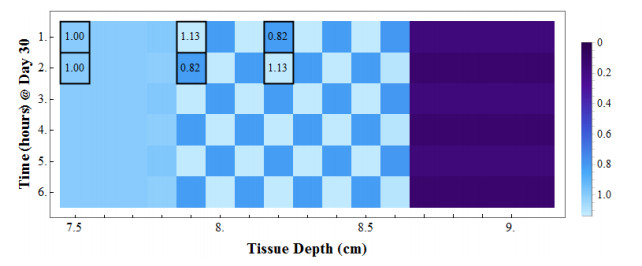


 DownLoad:
DownLoad: